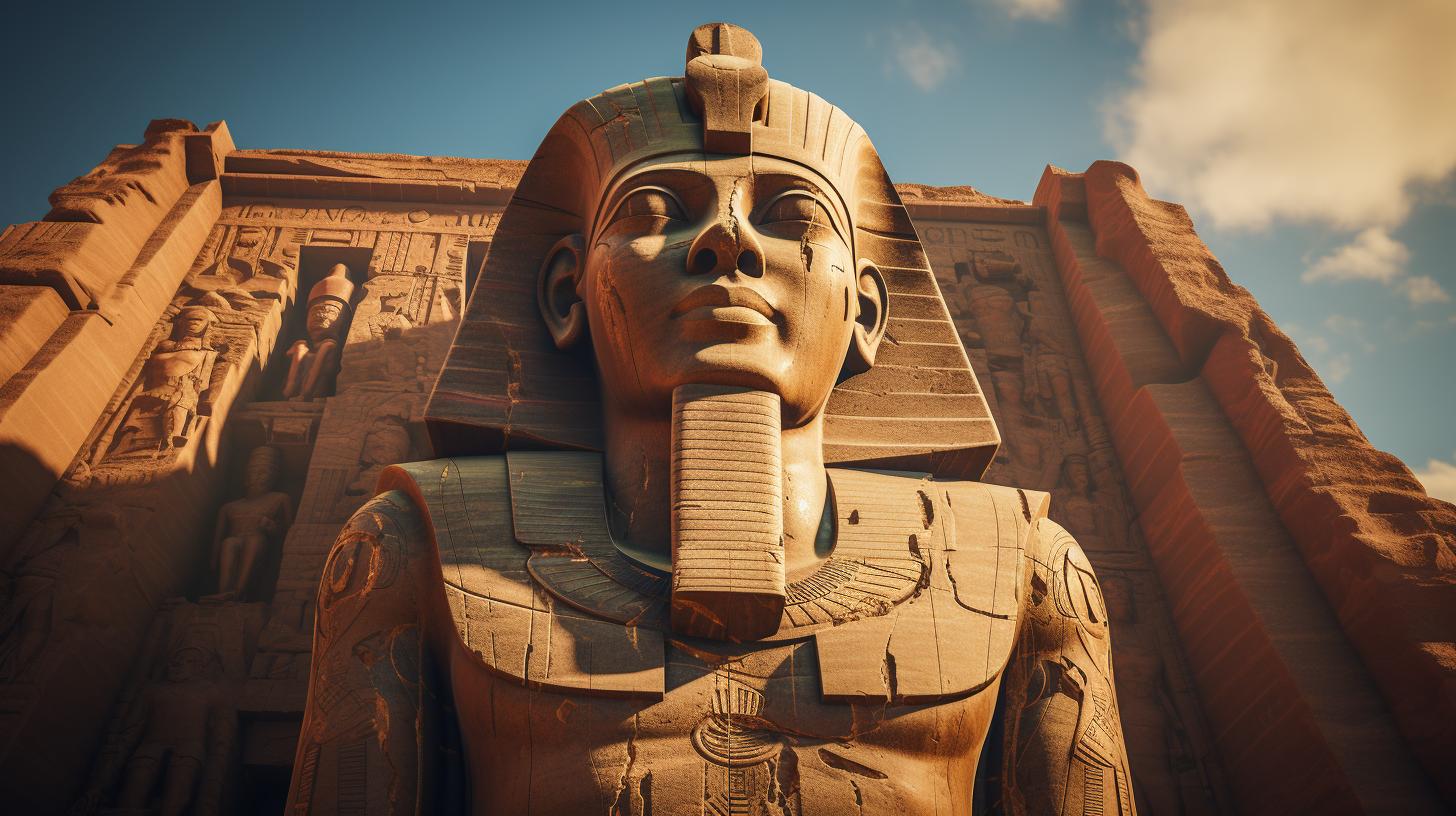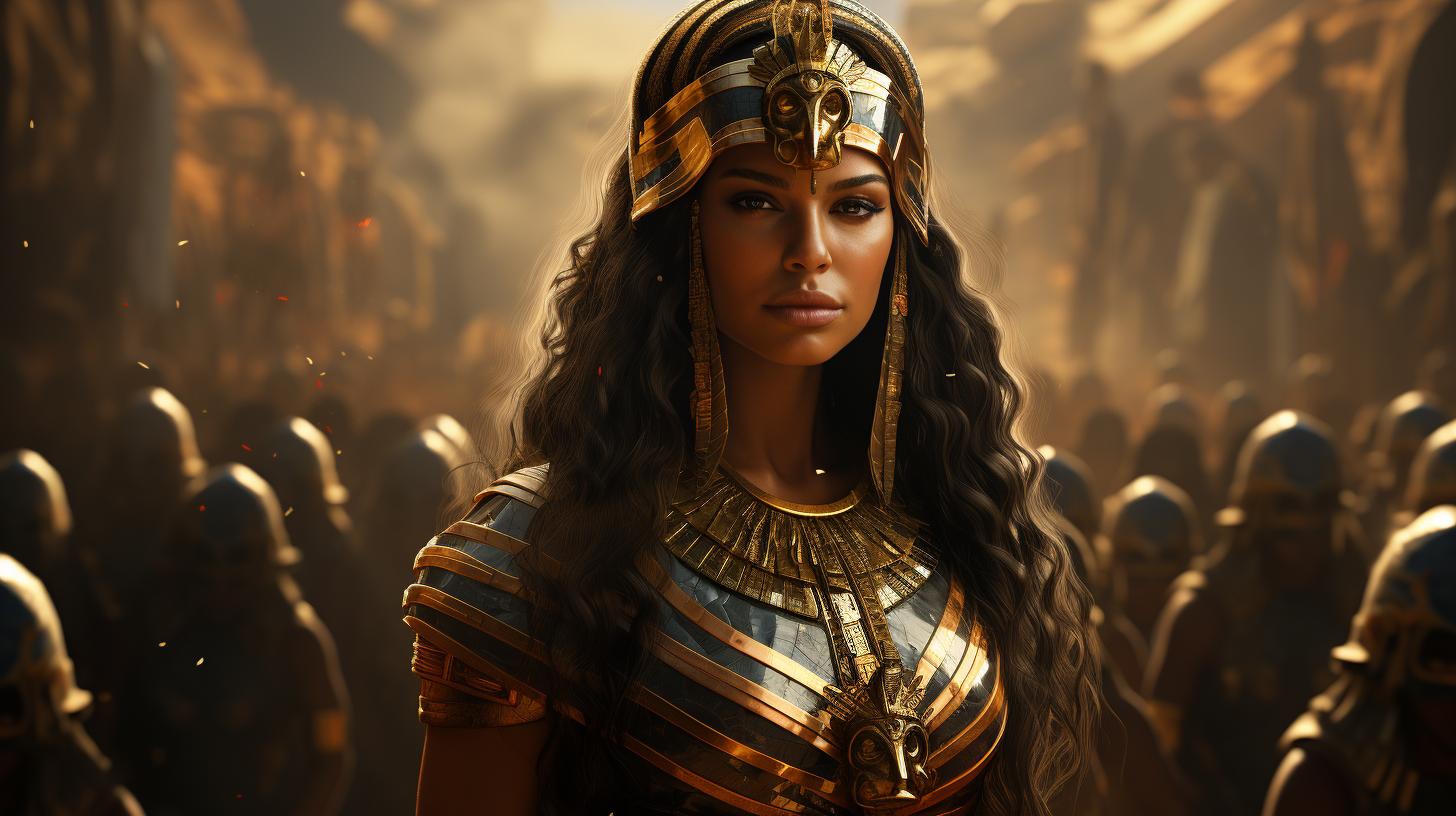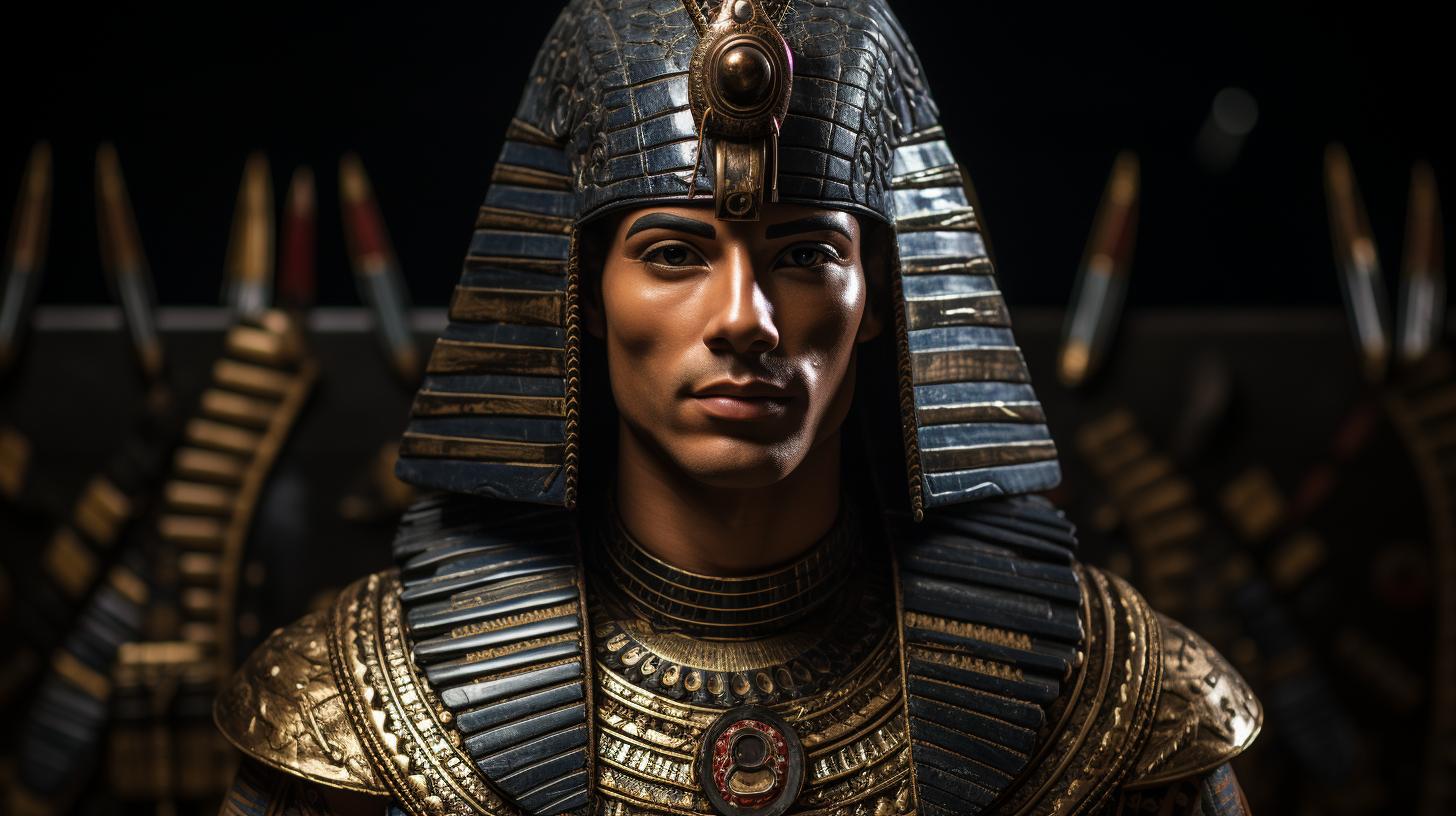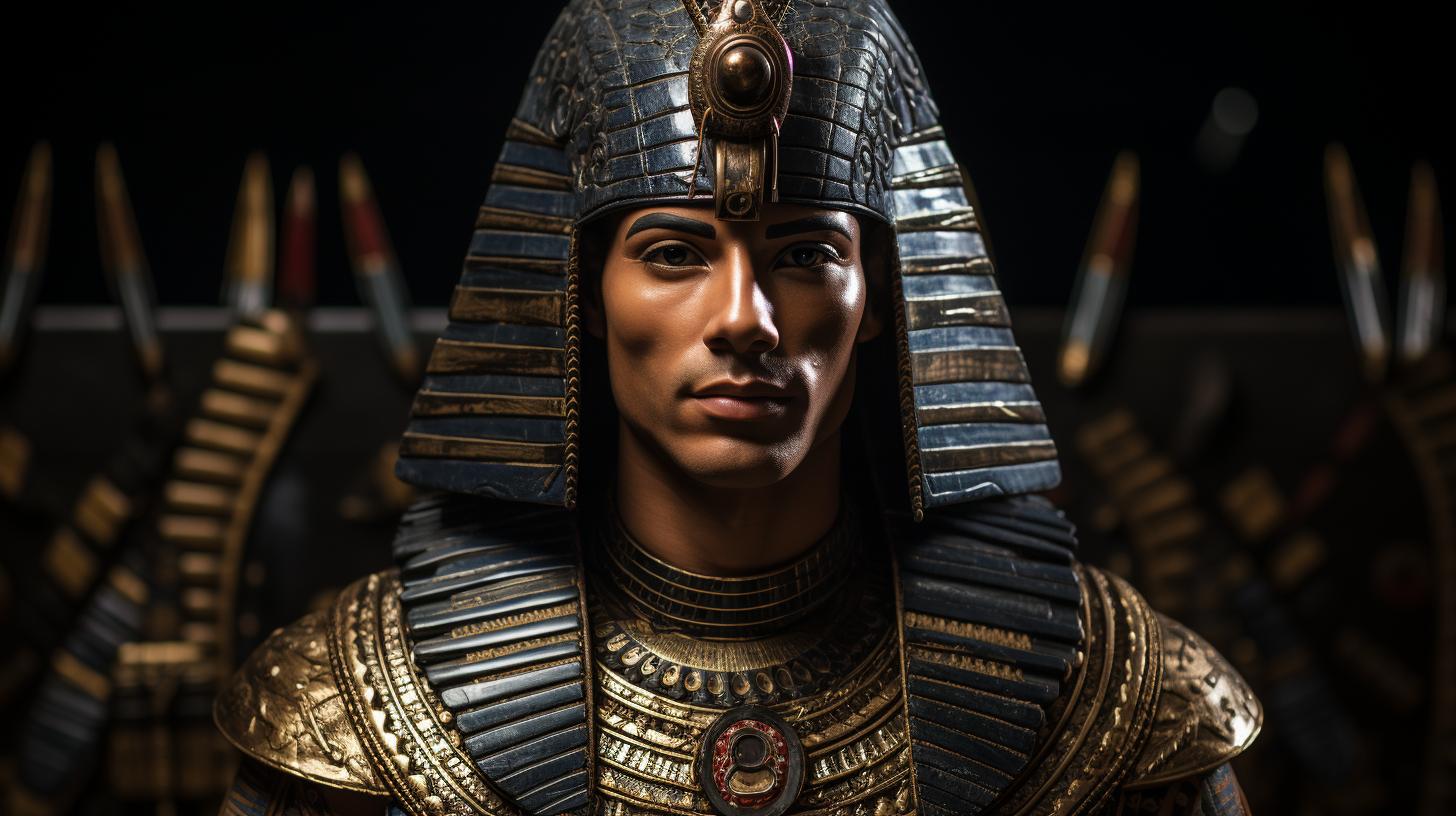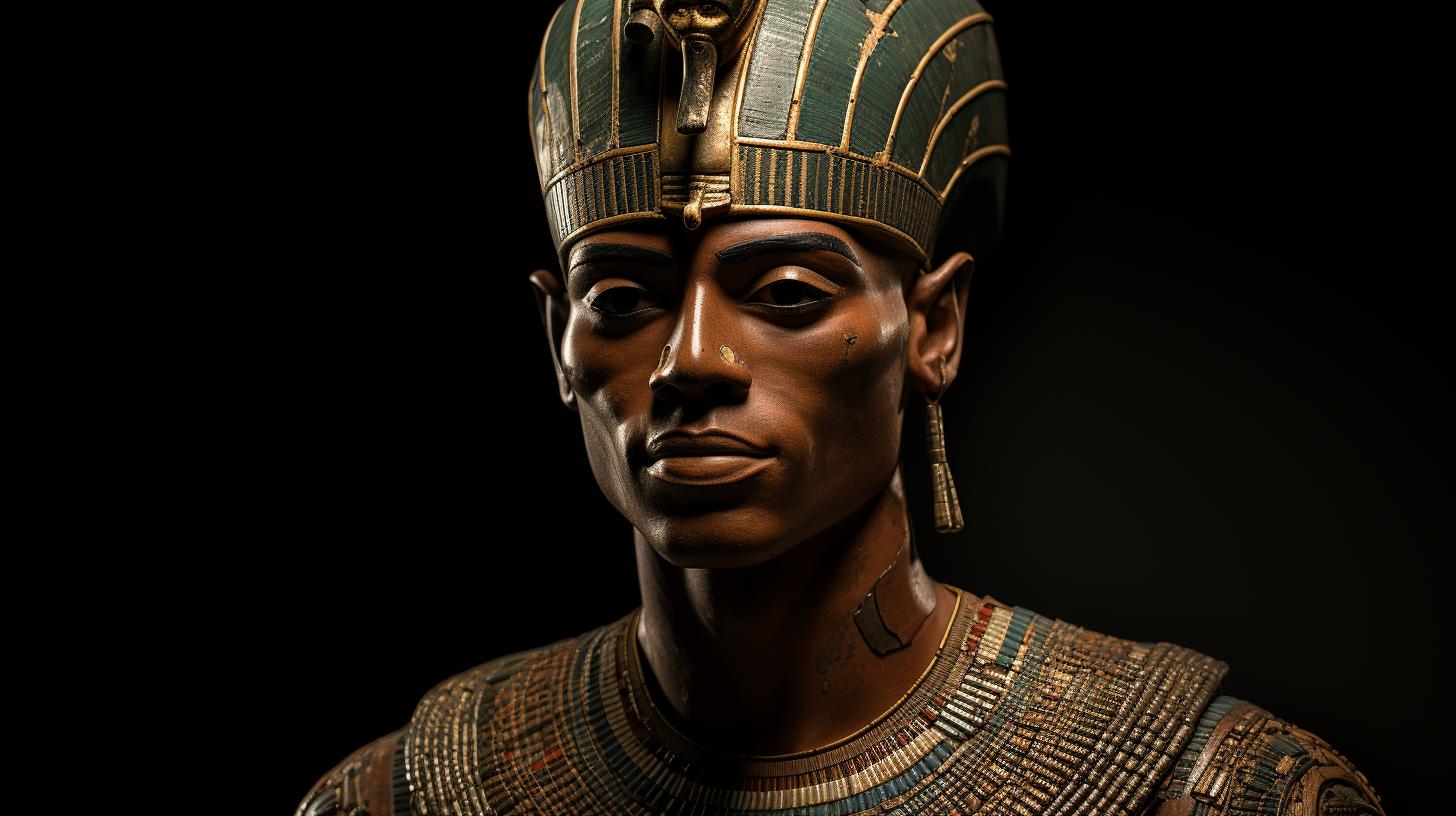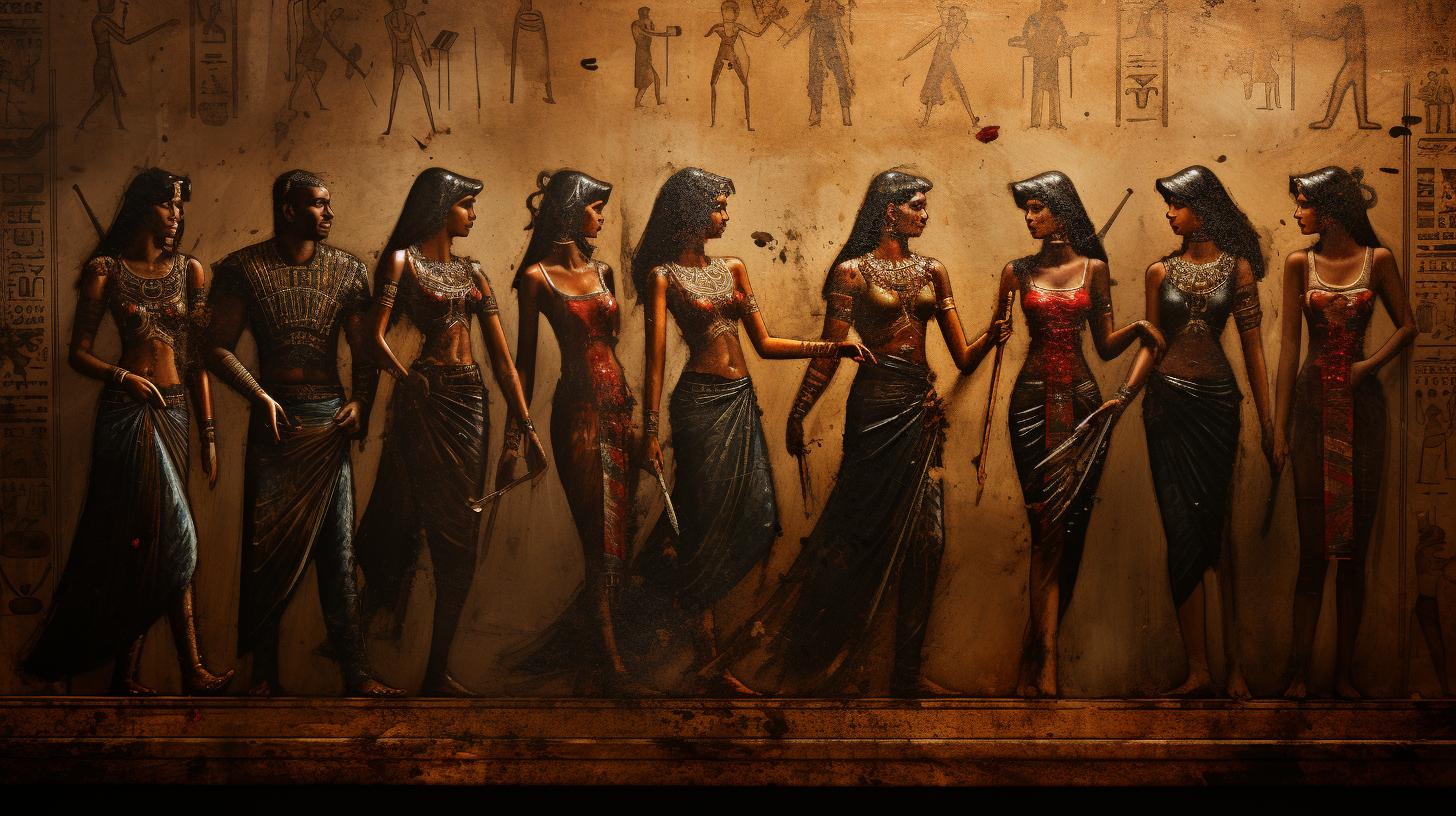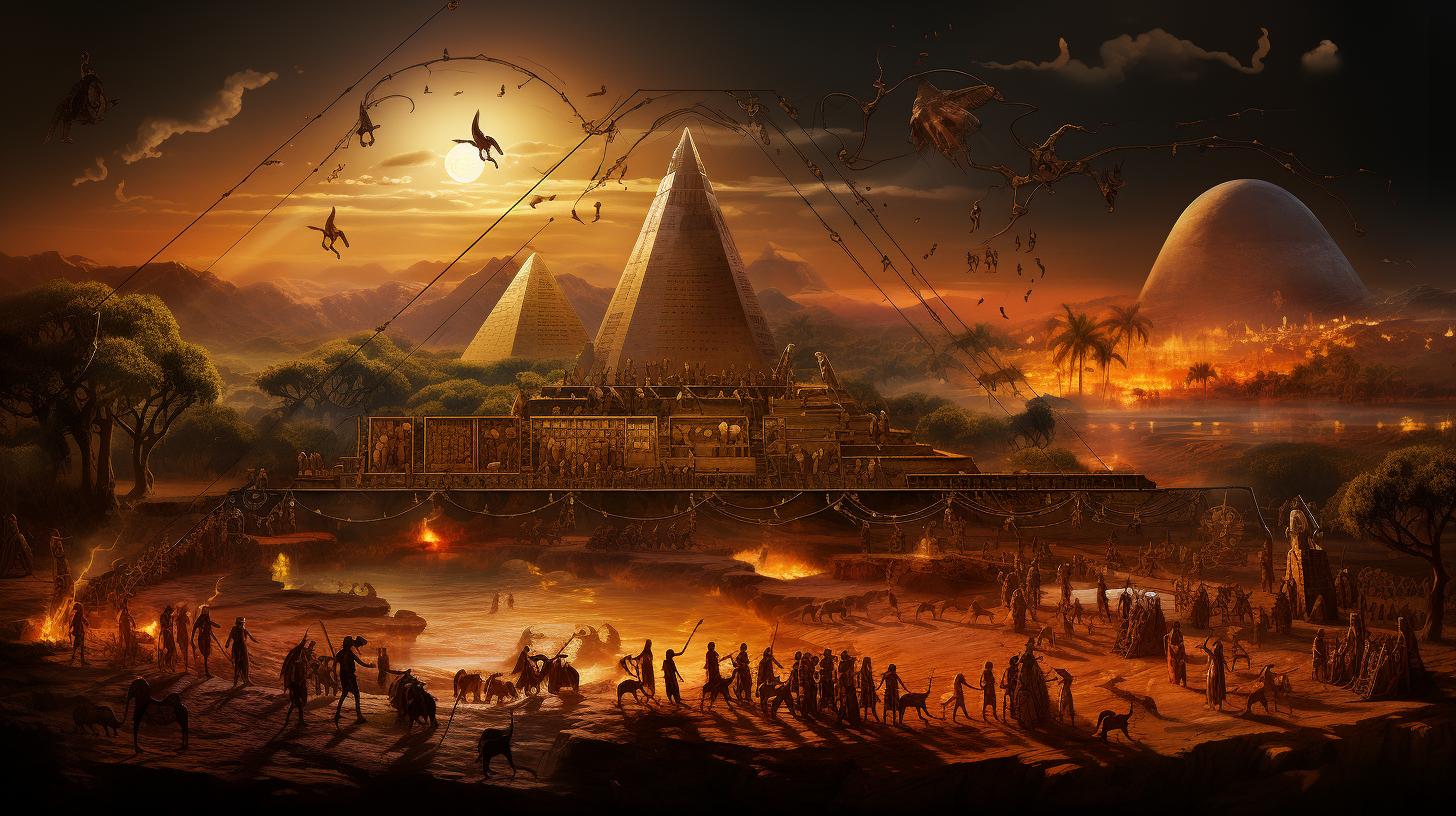Egyptian Pharaoh Ramses The Great: The Legendary Ruler of Ancient Egypt
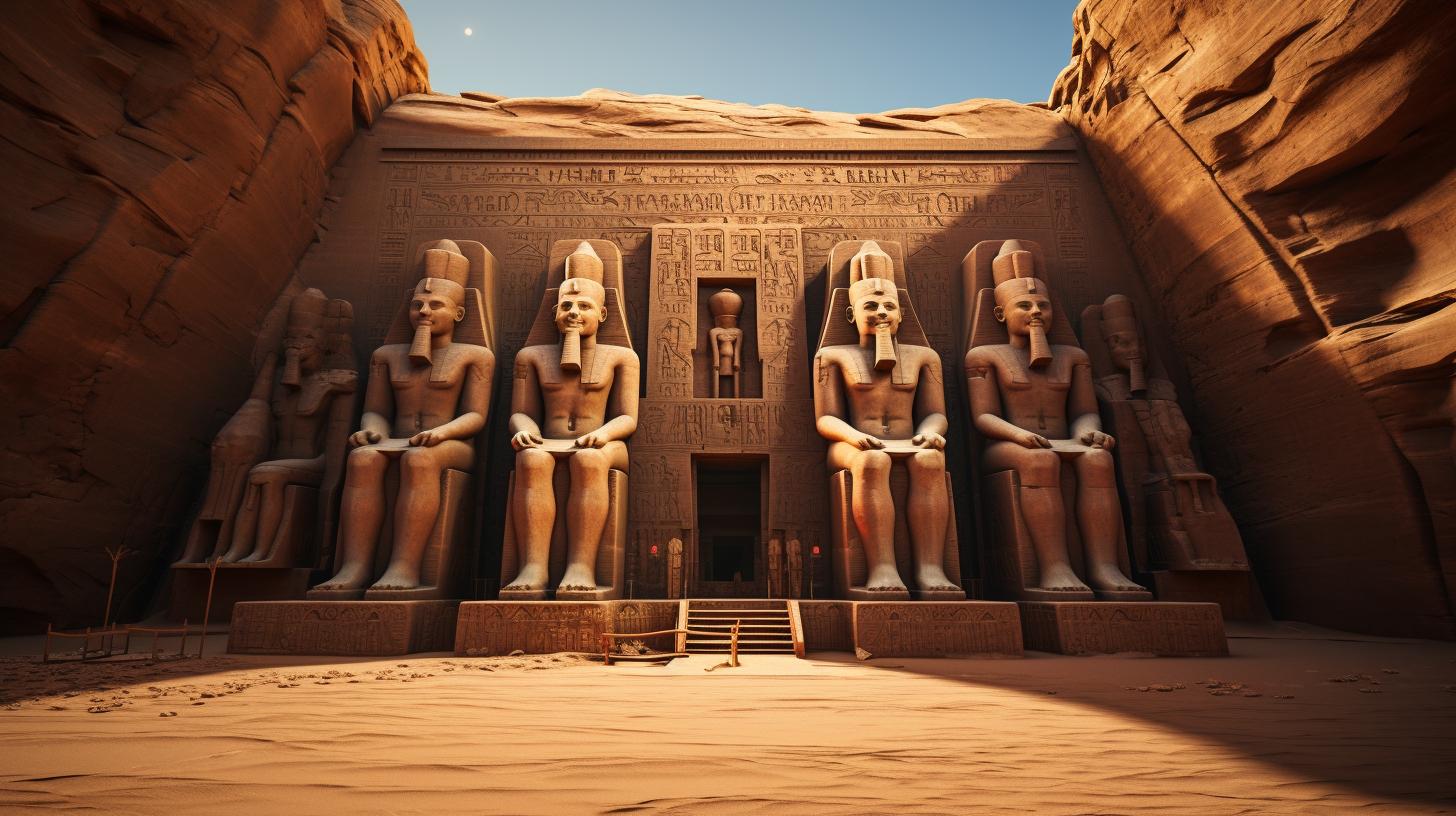
Ramses II, known as Ramses the Great, was a powerful and celebrated pharaoh of ancient Egypt. He ruled during the golden age of Egypt, from 1279 to 1213 BC.
Ramses II achieved numerous milestones and left a lasting legacy. From a young age, he was prepared to assume the throne and continue his father’s work. He proved to be a skilled warrior, leading successful military campaigns in Syria, Nubia, and Libya.
Ramses II also excelled in construction, building the city of Pi-Ramses and famous monuments like the Temple of Abu Simbel. His death and burial in the Valley of the Kings remain part of his enduring legacy.
Ramses II: The Powerful Pharaoh of Ancient Egypt
Ramses II, also known as Ramses the Great, was an influential pharaoh who ruled during Egypt’s golden age. He left an indelible mark on ancient Egyptian history through his remarkable accomplishments in various domains.
Early Life and Training
From an early age, Ramses II was groomed to succeed his father, Seti I, and take on the responsibilities of kingship. He accompanied his father on military campaigns, where he learned about governance and warfare, honing his skills as a leader and warrior.
Ramses II’s Military Campaigns
Ramses II’s military prowess and strategic acumen played a pivotal role in his reign. He led successful military expeditions to Syria, Nubia, and Libya, reclaiming lost provinces and solidifying Egypt’s dominance over these regions.
His campaigns in Syria were particularly significant, as they resulted in the recapture of territories and the preservation of Egyptian influence.
Construction Projects and Monuments
In addition to his military achievements, Ramses II was renowned for his ambitious construction projects. He established the city of Pi-Ramses in the Nile Delta, which served as the new capital of Egypt.
Among his most notable architectural feats are the magnificent Temple of Abu Simbel, dedicated to the sun gods, as well as the grand Rameseum and the impressive Karnak Temple complex.
The Death and Burial of Ramses II
Ramses II’s death marked the end of an era.
He was laid to rest in the Valley of the Kings, a site reserved for the pharaohs of the New Kingdom. In 1881, archaeologists discovered his well-preserved mummy, shedding light on the physical characteristics and health of this revered ancient ruler.
Furthermore, the tombs of his wives and relatives have also been unearthed, adding to the understanding of Ramses II’s personal life and dynasty.
Ramses II’s Military Campaigns
Ramses II, the legendary pharaoh of ancient Egypt, achieved great success through his military campaigns. From conquering foreign territories to establishing Egyptian dominance, his military prowess left a lasting mark on history.
Conquests in Syria
Ramses II led successful military expeditions in Syria, where he reclaimed lost provinces and secured Egypt’s influence in the region. These conquests not only expanded the Egyptian empire but also helped in protecting Egypt’s borders from external threats.
Triumphs in Nubia and Libya
Driven by his desire to extend Egyptian power, Ramses II also achieved triumphs in Nubia and Libya. He conquered and controlled these territories, strengthening Egypt’s hold on valuable resources and strategic positions.
Consolidating Egyptian Power in Asia
Ramses II was highly determined to consolidate Egyptian power in Asia. Through tactical military strategies and political alliances, he ensured that Egyptian dominance was firmly established in the region, furthering Egypt’s political and economic interests.
- Successful expeditions in Syria
- Triumphs in Nubia and Libya
- Consolidation of Egyptian power in Asia
Throughout his reign, Ramses II demonstrated his strategic military skills, expanding Egypt’s territories and securing its influence in various regions.
His military campaigns played a crucial role in solidifying his position as one of the greatest pharaohs in Egyptian history.
Construction Projects and Monuments of Ramses II
Construction played a vital role in Ramses II’s reign as he sought to leave a lasting mark on ancient Egypt. Through ambitious building projects, he aimed to showcase Egypt’s grandeur and secure his legacy.
Pi-Ramses: The New Capital of Egypt
One of Ramses II’s remarkable achievements was the establishment of Pi-Ramses, the new capital of Egypt. Located in the fertile Delta of the Nile, this city became a bustling center of commerce and politics.
It boasted impressive palaces, temples, and administrative buildings, displaying Ramses II’s dedication to advancing Egypt’s governance and infrastructure.
The Grand Temple of Abu Simbel
Undoubtedly, one of Ramses II’s most renowned architectural marvels is the Grand Temple of Abu Simbel. Carved out of a mountainside and dedicated to the gods of the sun, this temple stands as a testament to Ramses II’s piety and devotion.
Its colossal statues of the pharaoh at the entrance serve as a reminder of his authority and divine connection.
The Rameseum and the Shrine of Karnak
Within the boundaries of Thebes, Ramses II constructed the Rameseum, his mortuary temple. This vast complex featured grand courtyards, spacious halls, and intricate wall reliefs depicting the pharaoh’s achievements and interactions with the gods.
Additionally, Ramses II expanded the Shrine of Karnak, a sacred temple complex dedicated to the worship of Amun-Ra, further emphasizing his commitment to religious sanctuaries.
Ramses II’s construction projects and monuments, such as Pi-Ramses, the Temple of Abu Simbel, the Rameseum, and the Shrine of Karnak, testify to his vision of creating awe-inspiring structures that embodied the might and grandeur of Egypt during his reign.
These enduring legacies continue to captivate historians and visitors, offering glimpses into the spectacular world of Ramses II.
The Death and Burial of Ramses II
Ramses II, the powerful pharaoh of Ancient Egypt, met his end after a long and prosperous reign. This section delves into the details surrounding his death and burial, shedding light on the fascinating legacy left behind.
Burial in the Valley of the Kings
Ramses II was laid to rest in the renowned Valley of the Kings, a burial ground reserved for the elite of Egypt’s New Kingdom. This sacred valley, located on the West Bank of the Nile near modern-day Luxor, housed the tombs of various pharaohs and high-ranking officials.
The exact location of Ramses II’s tomb within the valley remains a subject of debate among scholars. While no definitive evidence exists, it is believed that he was interred in a tomb originally intended for his predecessor, Seti I.
Rediscovery of the Pharaoh’s Mummy
The 19th-century fascination with Egyptian archaeology eventually led to the rediscovery of Ramses II’s mummy. In 1881, an Egyptian mummy cache was found in the Deir el-Bahari temple complex, containing the remains of several pharaohs, including Ramses II.
Thanks to meticulous preservation techniques, Ramses II’s mummy was remarkably intact, allowing experts to study his physical features and gain further insight into his life and health. The discovery of his mummy proved to be a significant milestone in Egyptology.
Tombs of Ramses II’s Wives and Relatives
In addition to Ramses II’s burial, several tombs have been unearthed in the Valley of the Queens and other locations, belonging to his wives and relatives. These elaborate tombs painted a vivid picture of the royal family’s afterlife beliefs and the grandeur associated with their status.
Among the most notable discoveries is the tomb of Ramses II’s principal wife, Nefertari, renowned for its stunning frescoes depicting scenes of their eternal journey. The tombs of other queens and princes also provided valuable insights into the family dynamics and rituals of the time.
Exploring the death and burial of Ramses II offers a glimpse into the customs and practices of Ancient Egypt, reaffirming the enduring fascination with this exceptional pharaoh and his lasting impact on history.
Legacy of Ramses II: The Great Pharaoh
Ramses II, also known as Ramses the Great, left an indelible legacy on ancient Egypt. His reign had a profound impact on the New Kingdom, influencing various aspects of Egyptian society and culture.
Influence on the New Kingdom
Ramses II’s rule marked a significant period of stability and prosperity in the New Kingdom. His military conquests and successful campaigns solidified Egypt’s dominance in the region, expanding its territories and safeguarding its borders.
The wealth and resources acquired from these conquests allowed for extensive construction projects, economic growth, and advancements in art and architecture.
Additionally, Ramses II fostered diplomatic relations with neighboring kingdoms, establishing alliances and trade networks that further contributed to the wealth and influence of Egypt during his reign.
Significance in Egyptian History
Ramses the Great is considered one of the most powerful and celebrated pharaohs in Egyptian history. His military achievements, administrative skills, and ambitious construction projects transformed Egypt into a formidable empire and solidified its position as a dominant force in the ancient world.
The reign of Ramses II also witnessed a revival of traditional Egyptian religious practices and a reassertion of the pharaoh’s divine status. His widespread building programs dedicated to various deities helped promote religious unity and reinforce the pharaoh’s role as a divine ruler.
Impact on Modern Egyptology
The reign of Ramses II holds immense significance in the field of Egyptology. His vast architectural monuments, including the Temple of Abu Simbel and the Rameseum, continue to awe and inspire archaeologists and historians.
The discovery of his well-preserved mummy and the tombs of his wives and relatives have provided invaluable insights into ancient Egyptian burial practices and customs.
Furthermore, Ramses II’s reign has fueled ongoing research and exploration, contributing to the understanding of ancient Egyptian history, culture, and the overall legacy of pharaonic civilization.
Ramses IV: Successor to the Great Pharaoh
Early Life and Accession to the Throne
Ramses IV, the successor of the Great Pharaoh Ramses II, was born into a royal lineage during the 12th century BC. He received a comprehensive education in the traditions, history, and governance of ancient Egypt, preparing him for his future role.
In 1156 BC, Ramses IV ascended to the throne and inherited the responsibility of continuing the prosperity and legacy established by his predecessor.
Rulership and Achievements
During his reign, Ramses IV demonstrated capable leadership by maintaining stability and prosperity within the kingdom. He implemented efficient administrative reforms, focusing on efficient tax systems and promoting trade and commerce.
Ramses IV also prioritized the development and expansion of infrastructure, ensuring the well-being and connectivity of his subjects.
Furthermore, Ramses IV aimed to strengthen Egypt’s military power and strategic defenses. He bolstered the army and pursued successful military campaigns to ensure the security and integrity of the kingdom’s borders.
His commitment to maintaining a strong military presence helped safeguard the prosperity and territorial integrity that characterized Egypt during this period.
Contributions to Egyptian Culture
Aside from his political accomplishments, Ramses IV was an avid patron of the arts and literature, nurturing the flourishing cultural landscape of ancient Egypt. He supported the preservation and construction of temples, encouraging religious devotion and connecting his kingdom with the divine.
Ramses IV’s reign witnessed a notable cultural renaissance, with an emphasis on artistic expression and intellectual pursuits. He commissioned exquisite statues, reliefs, and architectural marvels, reflecting the grandeur and artistic prowess of ancient Egypt.
These cultural achievements served to solidify the cultural identity and influence of Egypt during Ramses IV’s rule.
- Enhancement of administrative reforms
- Promotion of trade and commerce
- Development and expansion of infrastructure
- Strengthening of the military
- Preservation and construction of temples
- Patronage of the arts and literature
Through his leadership and contributions, Ramses IV furthered the legacy of his predecessors, leaving a lasting impact on Egyptian culture and society.
The Nineteenth Dynasty: A Golden Era
The Nineteenth Dynasty marked a significant period in ancient Egypt’s history, known as a golden era of prosperity, power, and cultural achievements. This dynasty spanned from 1292 to 1189 BC, and it included several influential pharaohs who left a lasting impact on Egypt.
Overview of the Nineteenth Dynasty
The Nineteenth Dynasty emerged following the end of the chaotic Second Intermediate Period. It began with the accession of Pharaoh Ramesses I and marked the start of a new era characterized by stability, military prowess, and grand construction projects.
Succession of Pharaohs
- Ramesses I: The founder of the Nineteenth Dynasty, who laid the foundation for his successors.
- Seti I: Known for his military campaigns and impressive building projects, including the famous Mortuary Temple of Seti I in Thebes.
- Ramses II (The Great): One of the most renowned pharaohs in history, celebrated for his military victories, construction endeavors, and long reign.
- Ramses III: Notable for his successful defense against invasions and his efforts to preserve Egyptian culture and traditions.
Notable Events and Historical Context
The Nineteenth Dynasty witnessed significant events and played a crucial role in shaping Egyptian history.
- The Battle of Kadesh: Fought between Ramses II and the Hittite Empire, this conflict marked one of the largest chariot battles in history and ended with a truce.
- The Exodus: According to biblical accounts, this period may have coincided with the reign of Ramses II and the liberation of the Israelites from their enslavement in Egypt.
- Art and Architecture Flourished: The Nineteenth Dynasty saw remarkable artistic achievements, such as elaborate tomb decorations, intricate temple reliefs, and exquisite statues that reflected the wealth and grandeur of the era.
- Religious Developments: The growing influence of the Amun priesthood at Thebes and the rise of the cult of Ptah in Memphis were central to religious developments during this era.
The Nineteenth Dynasty left an indelible mark on ancient Egyptian civilization, with its powerful pharaohs, impressive military campaigns, and architectural marvels serving as a testament to the greatness of this golden era.
.

